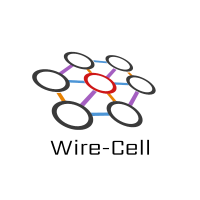Logging
Out with cout and its an error to use cerr!
 Wire-Cell News
Wire-Cell News
Updates from the Wire-Cell team.
Out with cout and its an error to use cerr!
As part of an enjoyable tutorial on applying machine learning techniques to LArTPC given by Kazu at BNL we were introduced to Singularity containers. There's been some WCT-related work in the past using Docker containers but that fizzled due to Docker's complexity and usage barrier (even if that leads to better build performance and features). It was immediately clear from Kazu's tutorial that Singularity reduces the usage barrier and would solve a big problem for the WCT team. Namely the difficulties we have in building FNAL's art and LArSoft (LS) software ecosystem on our computers. With Singularity containers we now have a way for just one person to suffer and let many others benefit.
The WCT configuration language Jsonnet allows to exploit software development patterns such as "don't repeat yourself" (DRY) and object inheritance. They are exploited to factor a configuration into layers so that it may, in total, serve many uses. This post describes how to override a parameter from a base object.
WCT is very configurable. It provides a way for the expert that wrote
the C++ component to provide sane defaults and a way that a user may
override or augment those defaults. WCT helps such intrepid users to
discover the defaults with the ConfigDumper WCT app component.
In WCT we try to follow the mantra "everything is a component". One corollary to that is we try to avoid hard-wiring dependencies by having functionality accessed by hard-wired construction of concrete classes. The various classes having to do with responses suffered from not being available as components. This led to the entire toolkit having hard-wired behavior which hampers support for multiple detectors. This post describes some recent steps to fix this problem.